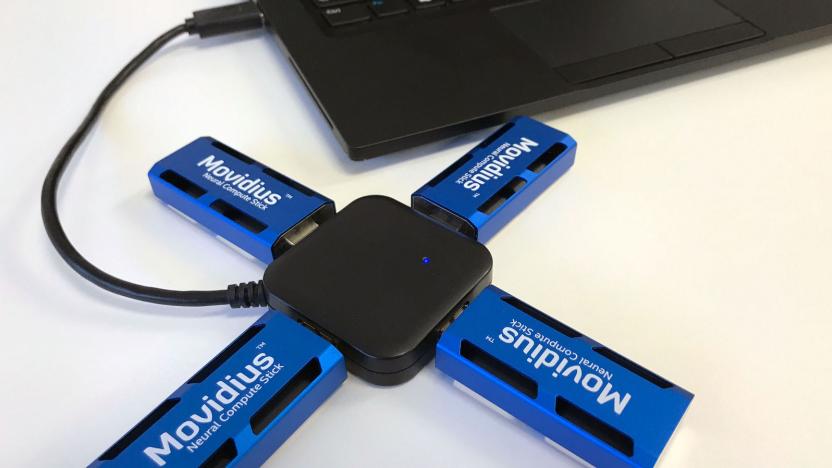myriad2
Latest

Intel RealSense tracking camera helps robots navigate without GPS
Intel is back with another RealSense camera, but this one has a slight twist: it's meant to give machines a sense of place. The lengthily-titled RealSense Tracking Camera T265 uses inside-out tracking (that is, it doesn't need outside sensors) to help localize robots and other autonomous machines, particularly in situations where GPS is unreliable or non-existent. A farming robot, for instance, could both map a field as well as adapt on the fly to obstacles like buildings and rocks.

Intel’s Myriad X chip will give drones and robots better vision
It's been almost a year since Intel scooped up AI and computer vision chip-maker Movidius. By the time of its takeover, the company had already crammed its Myriad 2 processor into drones, cameras, and USB sticks -- making it a good fit for Intel's beyond-the-PC strategy. The newly-unveiled successor to that chip will continue in the same vein. Only, this next-gen beast is the first to pack a "Neural Compute Engine." What that essentially means is that it has some pretty powerful deep learning capabilities. If Intel gets its way, the Myriad X chip will help drones, smart cameras, and robots to learn from and interact with their surroundings in real-time.

Intel puts Movidius AI tech on a $79 USB stick
Last year, Movidius announced its Fathom Neural Compute Stick — a USB thumb drive that makes its image-based deep learning capabilities super accessible. But then in September of last year, Intel bought Movidius, delaying the expected winter rollout of Fathom. However, Intel has announced that the deep neural network processing stick is now available and going by its new name, the Movidius Neural Compute Stick. "Designed for product developers, researchers and makers, the Movidius Neural Compute Stick aims to reduce barriers to developing, tuning and deploying AI applications by delivering dedicated high-performance deep-neural network processing in a small form factor," said Intel in a statement.

AI-powered cameras make thermal imaging more accessible
As cool as thermal cameras may be, they're not usually very bright -- they may show you something hiding in the dark, but they won't do much with it. FLIR wants to change that with its new Boson thermal camera module. The hardware combines a long wave infrared camera with a Movidius vision processing unit, giving the camera a dash of programmable artificial intelligence. Device makers can not only use those smarts for visual processing (like reducing noise), but some computer vision tasks as well -- think object detection, depth calculations and other tasks that normally rely on external computing power.


